I have pulled together this workout – most of the strength and conditioning exercises are “old school” and fairly simplistic, however, this doesn’t mean they are not effective. And a benefit is that they require less skill to perform and therefore are more likely to be performed safely and effectively.
AW PROMOTION: Doing strength exercises for running can help you avoid injury. Running can cause many types of injuries ranging from shin splints to twisted ankles. You could also have to deal with sore knees or an achilles injury. Knowing how to prevent injuries will keep you running and healthy for much longer.
Do note there is an almost limitless cache of exercises for runners that could be chosen. These are just some useful examples that I have found to be of benefit.
READ MORE: Strength training for runners
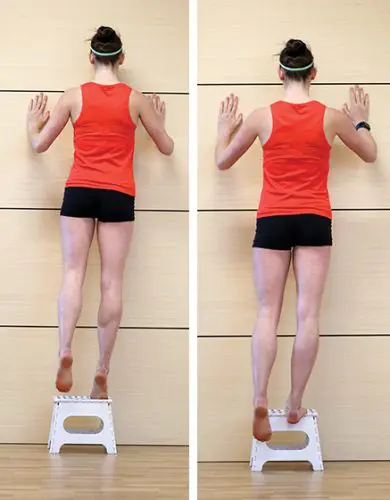 Benefits: enhances calf muscle strength and that of other soft tissue of and around the Achilles tendon and ankle. The exercise is best done in bare feet to optimise range of motion.
Benefits: enhances calf muscle strength and that of other soft tissue of and around the Achilles tendon and ankle. The exercise is best done in bare feet to optimise range of motion.
How to:
• Stand on low step preferably facing a wall.
• Heels should overhang with balls of feet on step.
• Ensure balance with fingertips only.
• On one foot, raise hips as high as possible squeezing calf hard in process.
• Lower heel until below level of step until a stretch is felt.
• Knee of working leg should remain straight.
Do: 10 reps each leg and increase as strength improves and/or add sets.
Benefits: improves abductor muscle strength.
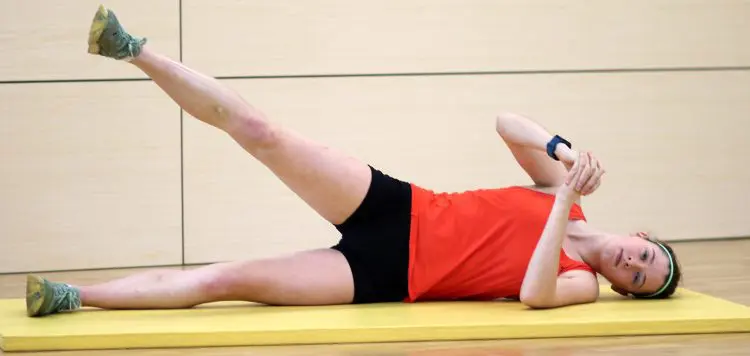
How to:
• Lie on one side.
• Keep working leg’s knee extended and lift leg as high as possible before lowering.
• After completing target number of reps, turn over and repeat on opposite leg.
Options: advance the exercise by holding the leg in an elevated position for 5-10sec and/or by using a Theraband.
Do: 10 reps on each leg and progress reps and sets and time held, where relevant systematically.
 Benefits: hamstrings, glutes, quads, deltoids, triceps and core. This is a great exercise for developing all over strength and balance.
Benefits: hamstrings, glutes, quads, deltoids, triceps and core. This is a great exercise for developing all over strength and balance.
How to:
• Start with dumbbells in line with shoulders.
• Focus eyes ahead and maintain the natural curves of your spine, whilst bracing your core.
• Squat by lowering the hips and not letting the knees bend lower than 90 degrees.
• On the way up press the dumbbells to arms extended and lower under control as you move into the next rep.
Options: can be advanced by adding weight incrementally and also by performing on a wobble or BOSU (“both sides up board”) to improve all-over stability.
Do: 2x10 and progress reps and sets systematically.
Benefits: strengthens the quads, glutes, hamstrings and core.
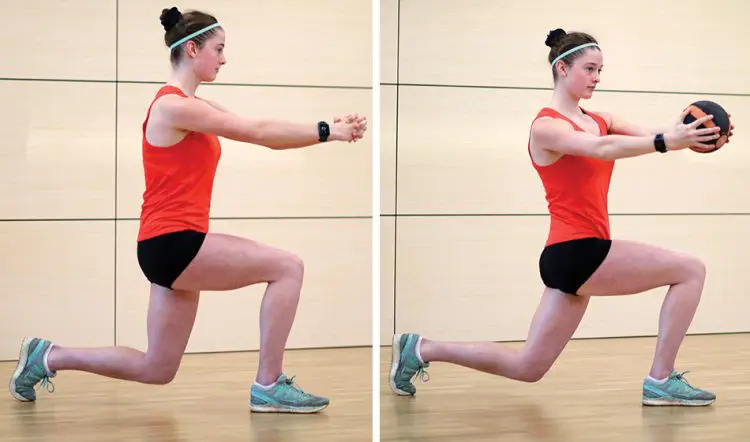
How to:
• Stand upright with feet together and eyes focused ahead.
• Arms can be held in various positions (straight in front, to the side or even reaching straight up).
• Take a long step forward to land on a flat foot. Try to keep 90-degree angles at both knees.
• Push back through the heel of the lunging leg to return to the start position.
• Repeat with other leg.
Options: a side lunge can be added which has the benefit of engaging the adductors and abductors. Further advances can be made by holding a suitable weight medicine ball (start with 2kg) and by adding a twist left, right and back to centre from the torso once in the lunge position.
Do: 2x10 and progress reps and sets systematically.
Benefits: glutes, core (including hip muscles).
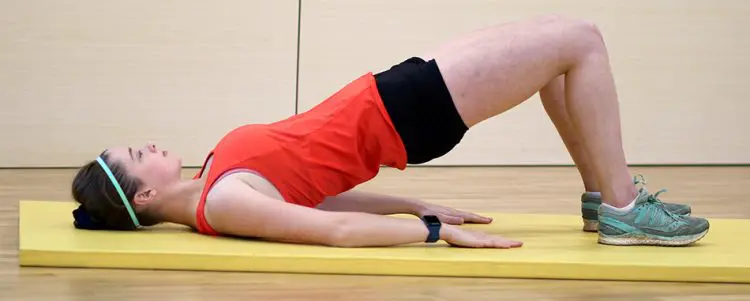
How to:
• Lie on back with knees bent and legs and feet flat on floor.
• Lift hips until a straight line is reached from knees to upper back.
• Hold and lower slowly.
Options: progress to lifting one leg from the floor and holding for a designated time, before lowering and lifting other leg.
Do: 2x10 and progress reps and sets systematically.
Benefits: targets the glutes – key to powerful running.
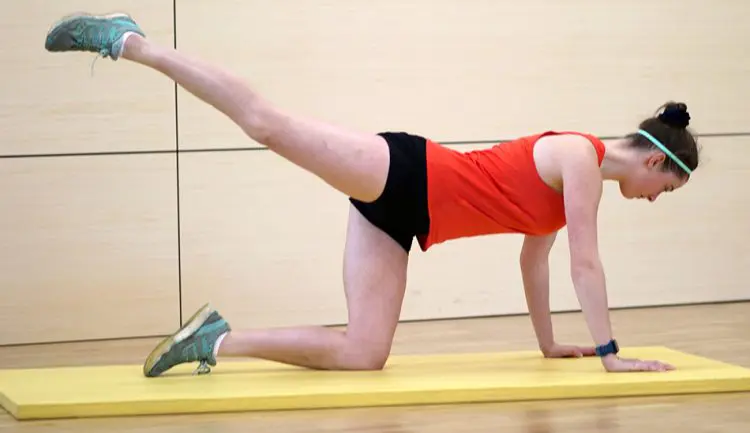
How to:
• On hands and knees, bring one knee into chest.
• Extend leg back and as high as possible before returning to starting position.
• Change to other leg once target reps have been completed.
Options: advance the exercise by extending left arm with right leg and vice-versa.
Do: 2x10 and progress reps and sets systematically.
Benefits: lower back, hamstrings, glutes. A great counter gravity exercise.
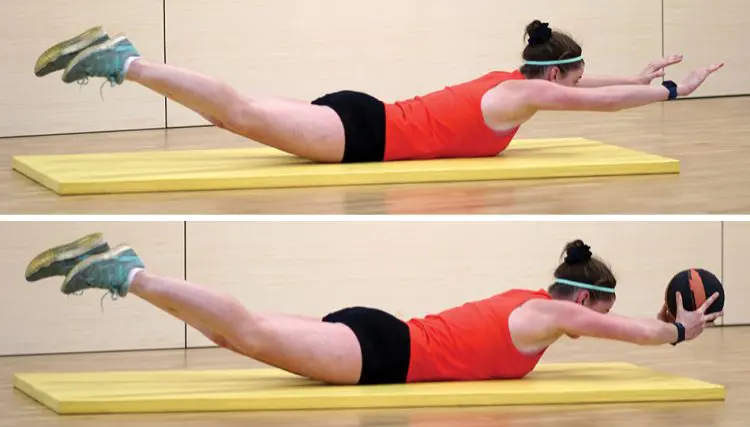
How to:
• Lie face down with your arms outstretched in front.
• Lift body upward using posterior muscles, so that arms and legs lift from floor.
• Focus on slow, rhythmic movements.
Options: progress by holding a light medicine ball.
Do: 2x10 and progress reps and sets systematically.
Benefits: core and hip flexors

How to:
• Lie on back with eyes looking up and knees slightly bent.
• Cross arms over chest.
• Curl body up (“squeeze” abs), keeping lower back on floor and return to starting position.
Benefits: chest, deltoids, triceps, core. The press- up is one of the oldest and simplest exercises around but is as effective as ever.
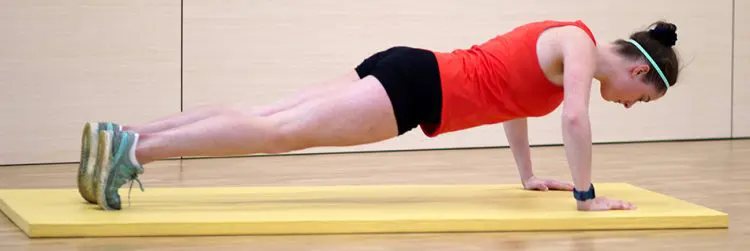
How to:
• Start with hands slightly wider than shoulder-width apart.
• Lower body by bending elbows - keep legs, bottom and back in alignment.
• Push back up to complete rep and repeat.
Options: can be advanced by adding a leg raise – hold and alternate legs. Other variants include press-ups performed with narrow or wider hand spacing.
Do: 3x13 and progress reps and sets systematically.
The number of reps, sets, extra resistance, weight added and time held should be increased incrementally and when relevant.
Do expect to feel some soreness or stiffness the following day or two if unfamiliar with some or all of the workouts and exercises but this should not be debilitating.
Try to include the workout once or twice a week and you could even include some of the exercises in your warm-ups or cools downs. All the selected exercises, although basic, require good technique and cover most of the muscle groups needed to enhance “running robustness” and increase speed and power.
» Click here for part one – strength training for runners
» This article was first published in AW magazine
» David Lowes is a freelance level 4 coach, photographer and athletics writer as well as BMC secretary, academy chair and event organiser
» For more on the latest athletics news, athletics events coverage and athletics updates, check out the AW homepage and our social media channels on Twitter, Facebook and Instagram
